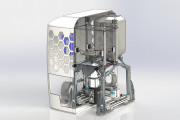 2020-05-04
2020-05-04
Graz University of Technology (TU Graz) in Austria has develop a new technology by using LED instead of laser as light sources to make metal component by 3D printing. The research project is named Selective LED-based Melting (SLEDM).
SLEDM uses high-power LEDs as light source to melt metal powder for 3D printing manufacturing. The technology is similar to selective laser melting (SLM) and electron beam melting (EBM), in which metal powder is melted by means of a laser or electron beam and built up into a component layer by layer. However, by replacin...
Continue reading →
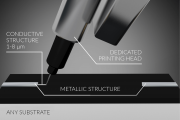 2020-02-24
2020-02-24
Osram Opto Semiconductors recently began to work with a Polish company XTPL to initiate evaluation of adopting 3D printing technology solutions to address the challenges connected with the manufacture of future generations of lighting elements.
Osram signed an agreement with XTPL on January 21, 2020, to access the possibility of implementing XTPL’s technology in Osram’s production processes for create conductive interconnections for semiconductors. The potential industrial application of the XTPL method in the lighting industry is yet another proof of ...
Continue reading →
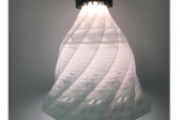 2019-12-13
2019-12-13
Lighting Research Center (LRC) announced the partnership with Eaton to work on a project of additively manufactured LED-integrated luminaire, which is to use 3D printing technology to produce LED luminaires. The 3D printing luminaire development project is under funding from the United States Department of Energy and aims to address the main barriers to widespread adoption of 3D printing technology as applied to solid-state lighting. (Image: LRC/Eaton) Over the next two years, the project partners will conduct material science, electronics, optics, and adv...
Continue reading →
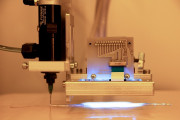 2019-10-08
2019-10-08
Fraunhofer Institute for Applied Polymer Research IAP partnered with Freie Universität Berlin and Technische Hochschule Wildau to work on a research project for developing a novel 3D printing process that enables easier and more efficient production of three-dimensional components using UV-LED-curable reactive resins. This allows printing times to be reduced compared to conventional additive manufacturing processes.
According to the researchers, the new project, named BUERMa, standing for "Belt deposited, double UV-cured materials for 3D engineerin...
Continue reading →
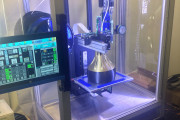 2019-04-19
2019-04-19
Building upon the progress made during a recent workshop, the Lighting Research Center (LRC) at Rensselaer Polytechnic Institute has formally established the Additive Manufacturing for Lighting Consortium. The consortium will help bridge the knowledge gap between the lighting and 3D printing industries and build a collaboration for successful adoption of additive manufacturing for high-quality, value-added lighting.
The consortium, composed of lighting and 3D printer and material manufacturers, convened its first meeting on April 2 and is now setting a course to underst...
Continue reading →
 2015-11-10
2015-11-10
Luxexcel, the only company in the world able to 3d print functional optics and OPTIS, the leading software vendor for the scientific simulation of light, human vision and physically correct visualization, announce a collaboration. This collaboration enables an easy route from CAD design to custom 3D printed prototype.
Continue reading →
2015-07-06
Indian architect Ekaggrat Singh Kalsi recently completed a lighting portrait of his two-year old daughter using 3D printing technology, according to a 3D Print.com report.
Continue reading →
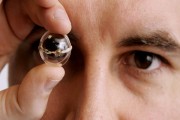 2014-12-11
2014-12-11
As part of a project demonstrating new 3-D printing techniques, Princeton researchers have embedded tiny light-emitting diodes into a standard contact lens, allowing the device to project beams of colored light.
Continue reading →
2014-10-02
The Netherlands, LUXeXceL Group; Worlds only additive manufacturer of optical components, today announces both the launch of a new additive manufacturing platform that delivers high speed and precision as well as the introduction of a new clear material “LUX-Opticlear”, allowing high quality optics manufacturing up to 20mm in height.
Continue reading →
 2020-05-04
2020-05-04
 2020-02-24
2020-02-24
 2019-12-13
2019-12-13
 2019-10-08
2019-10-08
 2019-04-19
2019-04-19
 2015-11-10
2015-11-10
 2014-12-11
2014-12-11